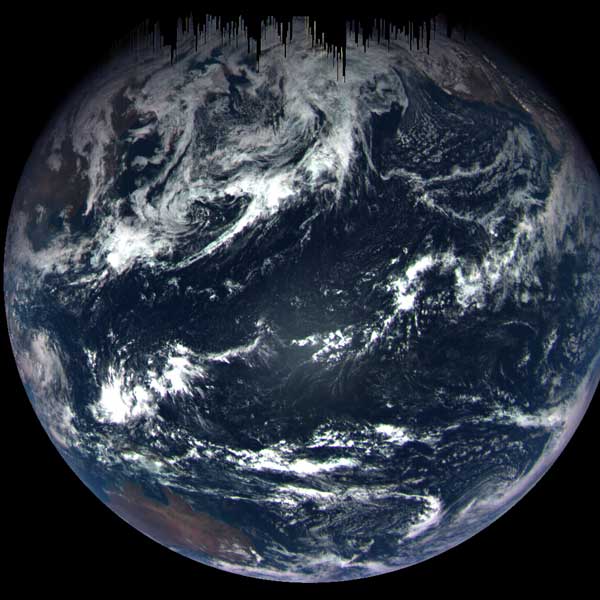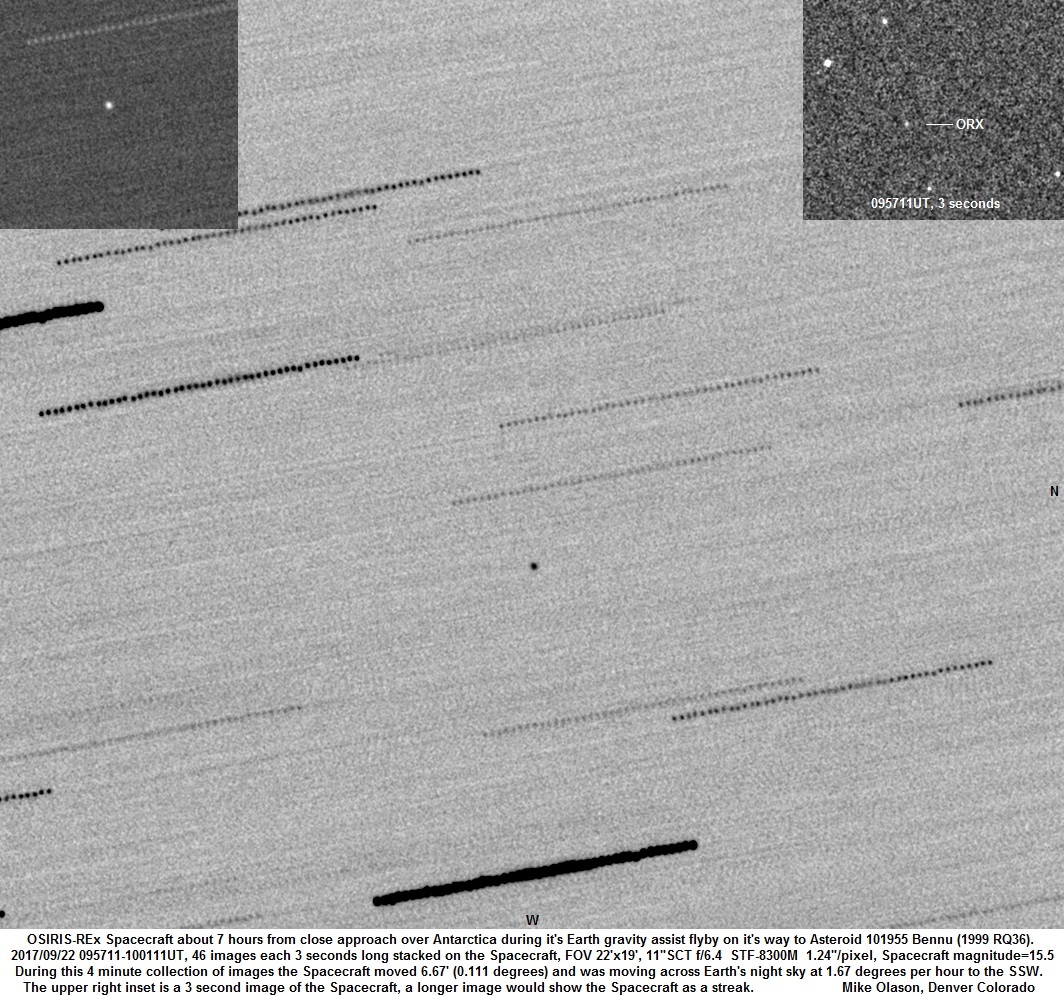The asteroid-bound Osiris-REX mission took time during last Friday's gravity assist maneuver to look back at its home world.
It isn't everyday we get a postcard from a spacecraft passing our home world.

NASA / Goddard / University of Arizona
Osiris-REX did just that this past Friday, passing by Earth at a distance of 11,000 miles (17,000 km) — closer than the ring of geostationary satellites girdling Earth — at 12:52 p.m. EDT / 16:52 UT. Osiris-REX was moving at 8.5 miles per second at the time of the encounter.
The big blue marble of Earth filled the spacecraft's view, as it snapped an image just hours after its closest approach to the Earth, from 106,000 miles away. The view is centered on on the Pacific Ocean region, with Australia and New Zealand to the lower left and Baja California to the upper right. Also visible is Typhoon Nesat headed towards southeast Asia.
The jagged upper edge of the image is due to the short (less than 0.003 second) exposure time used to image Earth. Such exposures will not be necessary to image the much darker body of Bennu.

Mike Olason / Online Photo Gallery
Reaching Bennu
The maneuver kicked Osiris-REX slightly out of the ecliptic plane and towards its target: asteroid 101955 Bennu. Bennu is a carbonaceous asteroid 550 meters in diameter and orbiting the Sun once every 1.2 years in an orbit inclined 6° relative to the Earth's orbit.
While the images of the Earth and Moon from Friday's flyby aren't of scientific value — lots of satellites, including NASA's DSCOVR mission monitor the full-disk view of Earth around the clock — the flyby did give the Osiris-REX team a chance to calibrate their imagers, including the OCAMS suite of cameras.
The world also waved hello to the Osiris-REX mission as it passed Earth last Friday, a small ambassador of exploration headed to a small world.
What's next for Osiris-REX? The plan now is for the mission to rendezvous with the asteroid next summer in August 2018, survey and map it up close, and then approach a selected site for sample collection using its TAGSAM arm. Osiris-REX will then depart Bennu to return its sample to Earth on September 24, 2023.
NASA has had other spacecraft fly by Earth in the past: Galileo (in 1990 and again in 1992), NEAR-Shoemaker (1998), Cassini (1999), Stardust (2001 and 2006), Messenger (2005), and most recently Juno (2013). The record-holder is Deep Impact/EPOXI, which has swung past Earth five times, in 2007, 2008, twice in 2009, and 2010.
Now, its onward to Bennu for Osiris-REX and its date with space exploration history.
 1
1









Comments
September 29, 2017 at 10:00 pm
Thank you.
Typos:
- 275m equatorial **radius**.
- MESSENGER flew by Earth also, maybe some others.
You must be logged in to post a comment.
You must be logged in to post a comment.